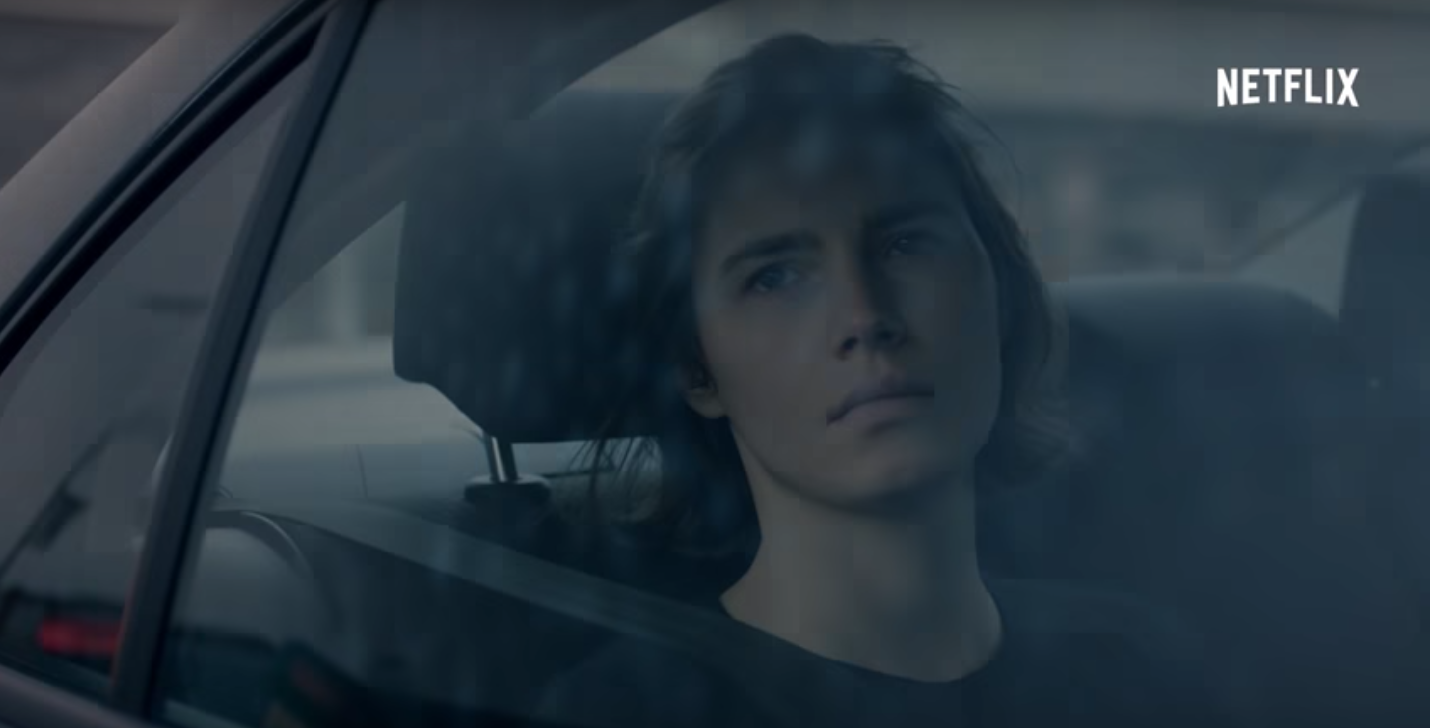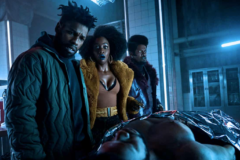With the premiere of both CBS’ The Case Of: JonBenet Ramsey and Netflix’s Amanda Knox documentary, it’s been a fun few weeks for fans of gory “true crime” programming. Both projects exhumed the ghosts of suffocating news cycles gone by—the bottom-of-the-barrel yellow journalism, specious tell-alls, futile dinner table arguments, problematic assertions spewed by guffawing male newscasters, and eventually, your best friend’s dad. Amanda Knox happened a few years ago, and JonBenet Ramsey a few years before that—and so our newfound modicum of distance would finally allow the public to access some essential truth in these cases that the world missed the first time around. Well, according to producers, at least.
Recent hits in this genre have presented a definitive narrative of the crimes and subsequent investigative process, like last year’s Making a Murder. They’ve also done a systemic breakdown of why the cases became objects of worldwide public fascination, like this year’s O.J.: Made in America. In aiming to achieve the former, CBS’ JonBenet failed boldly. Its team of “experts” laid out their investigative logic with the coherence of a vlogger talking through the ending of Inception, and the result was a defamation suit served by their casually elected suspect of choice.
This is where Amanda Knox was different; the show opted for modesty over showiness, as the directors tried to untangle why the trial of “Foxy Knoxy” became such a global phenomenon. There’s no fresh analysis of the evidence, or lack thereof, that aided the local police of Perguia, Italy, in convicting 20-year old study abroad student Amanda Knox of murder. The focus isn’t on the specific mechanics of the case, but the personalities that shaped its surrounding narrative. Directors Rod Blackhurst and Brian McGinn cribbed their approach from influential documentarian Errol Morris, allowing a small troupe of unreliables to squirm revealingly in front of a stark background, offering their irreconcilable versions of events. It’s comparative brevity to other true crime shows left viewers with no insane reveal, but plenty of emotions to weigh nonetheless.
To refresh your memory: In 2007, Knox and Raffaele Sollecito, her Italian boyfriend of less than a week, were accused of murdering Meredith Kercher, Knox’s British study-abroad roommate. Kercher was found under a blood-drenched blanket in their apartment, with roughly 40 stab wounds on her body and evidence of sexual assault. The murder might date back to the George W. Bush administration, but it was a mystery for the nascent social media generation—a horror story starring millennials where we, the dormant millennials, could go online and check out Knox’s social media footprint. (Her still-active Myspace profile was infamously registered to “Foxy Knoxy,” driving the tabloid-ready nickname.)
The sense of modern intimacy drove the interest in this case, but the Netflix doc hardly focuses on the case as a distinctly 21st century phenomenon. TV newscasters grin ghoulishly as print headlines flicker on screen like a newsreel montage from Citizen Kane. In the credits sequence, the talking heads are rendered in black-and-white, giving them a worn-out noir mystique. The film suggests that the Knox witch hunt was steeped in ancient tradition—at one point, Knox claims she was slapped in the back of the head during her 53-hour interrogation and prompted to “confess,” evoking cartoonish images of the Spanish Inquisition. Giuliano Mignini, the unrepentant head prosecutor who seems to believe he’s a police detective, pontificates about the distinctions between male and female behavior like objective fact, and bemoans Amanda’s supposedly untrustworthy, sociopathic “attitude.” In confirming your worst assumptions about how old white men contribute to institutionalized sexism, Blackhurst and McGinn show a man who seemingly took his view of women from Raymond Chandler femme fatale stereotypes and the racier parts of the book of Genesis.
Mignini is omnipresent in the film, creating a stark contrast to Knox’s own, strangely minimal role. Despite cryptic showings at the beginning and end of the movie, she fades from the view for the body of the film. Rather than offering reflections, she simply narrates the previously-known details of her defense. She doesn’t comment on law enforcement’s attempt to police her emotions, the trial process, or the height of the media scrutiny. She only briefly discusses the most haunting part of the story: the psychological torture that resulted in her self-incrimination as a potential accomplice to murder. That 53-hour interrogation gets about a minute of her own description. We’re never invited behind the curtain of her private life for more than a vague moment.
Even if we might want to hear more from Knox herself, the structure mimics the way in her voice was previously drowned out by the prosecution and media—in a time when it presumably mattered much more. At crucial moments, other people’s voiceovers play over images of Knox stoically gazing into the camera stoically, a living set piece for a narrative invented by others. Ironically, Mignini feels like a character we’re meant to empathize with just as much we would Knox herself, if only because he’s at least given more time to elucidate his various lines of flawed reasoning.
And though Amanda Knox positions itself like an emotionally raw and dynamic document of a failed system sensationalizing a woman’s struggle, it ultimately comes off as a chilly still life. Like JonBenet, it reassembles the familiar narratives, and mythologizes its key figures all over again. Knox’s interviewees are hopelessly mired in their world-views and convictions about the case, and no one seems to be pushing them beyond their comfort zone of talking points—to provide the tension which drives the Morris documentaries so clearly cited by the filmmakers.
Is Amanda Knox achieving something more noble than the media coverage it indicts? It looks prettier, certainly. Mostly, however, the film encourages the viewer to do the same thing as the original tabloid scoops and CNN special reports: debate what is going on behind the “eyes” of an undemonstrative face, whether accurate or not.
Winston is a writer and musician living in Brooklyn; you can read his work at Pitchfork, Grantland, Village Voice, Inverse, and elsewhere.





